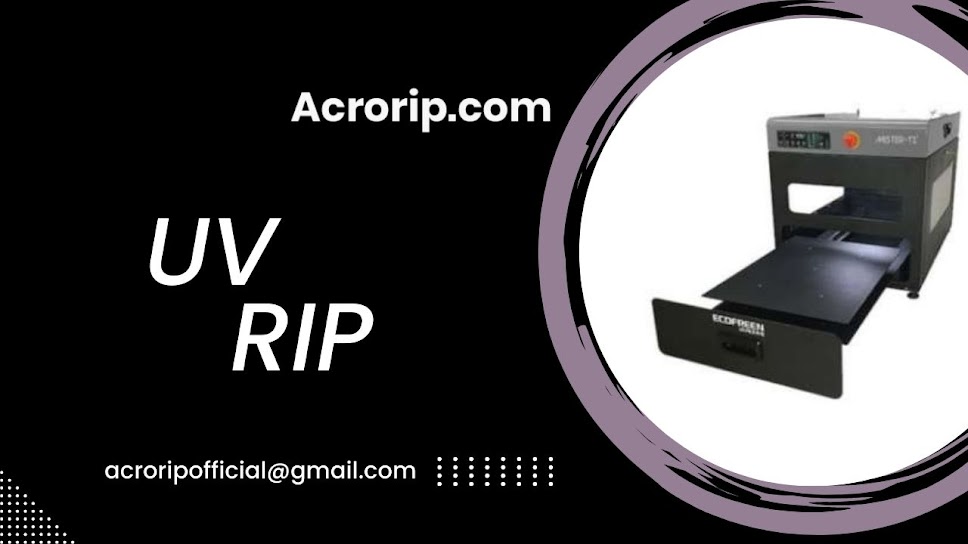Unlocking the Power of RIP Software: UV RIP, Epson RIP, and DTF RIP Explained
In the world of digital printing, RIP (Raster Image Processor) software plays a crucial role in achieving high-quality prints. Whether you’re in the business of UV printing, direct-to-film (DTF) printing, or using Epson printers for custom designs, selecting the right RIP software can elevate your workflow and print quality. In this blog, we’ll explore UV RIP, Epson RIP, and DTF RIP to understand their differences, benefits, and how they impact print production.
What is RIP Software?
RIP software is an advanced program that converts vector images into rasterized formats suitable for printers. It manages ink distribution, color accuracy, and print resolution, ensuring superior image quality across different printing technologies.
Understanding UV RIP: Enhancing UV Printing Efficiency
UV RIP software is specifically designed for UV printers that use ultraviolet light to cure inks instantly. This technology is widely used for printing on rigid surfaces such as glass, wood, plastic, and metal.
Benefits of UV RIP:
Color Accuracy: Ensures sharp, vibrant colors by optimizing ink distribution.
Layering Capabilities: Enables precise white ink layering for opaque designs.
Material Compatibility: Supports a variety of substrates for custom printing needs.
Optimized Curing Process: Works seamlessly with UV inks to produce durable prints.
Many businesses rely on UV RIP software to streamline their UV printing operations, achieving consistent results with minimal wastage.
Epson RIP: Unlocking Advanced Print Control
Epson RIP software is tailored for Epson printers, enhancing their capabilities for DTG (Direct-to-Garment), DTF, and sublimation printing. Epson printers are known for their high resolution and color depth, making Epson RIP a vital tool for precision printing.
Why Use Epson RIP Software?
ICC Profile Support: Ensures color accuracy and print consistency.
Ink Optimization: Minimizes ink consumption while maintaining quality.
Multi-Layer Printing: Allows simultaneous white and color printing for enhanced details.
Customizable Print Settings: Gives users complete control over DPI, ink flow, and halftoning.
For businesses relying on Epson printers, investing in Epson RIP software improves efficiency and ensures professional-grade output.
DTF RIP: The Future of Textile Printing
DTF (Direct-to-Film) RIP software is specifically designed for DTF printing, a game-changing technology in the textile industry. Unlike DTG, DTF printing allows designs to be transferred onto various fabrics using heat and adhesive DTF printing powder.
Advantages of DTF RIP Software:
White Ink Management: Ensures smooth white ink application for vibrant transfers.
Precise Ink Placement: Improves detail sharpness for fine designs.
Versatile Printing: Works on cotton, polyester, leather, and more.
User-Friendly Interface: Simplifies the DTF process for beginners and professionals alike.
With DTF RIP software, businesses can produce long-lasting, high-quality textile prints efficiently.
Choosing the Right RIP Software for Your Needs
When selecting UV RIP, Epson RIP, or DTF RIP, consider the following:
Printing Application – UV printing for rigid materials, Epson for DTG/DTF, or DTF for fabric transfers.
Color Management – Ensure ICC profile support for accurate color reproduction.
Compatibility – Check if the software supports your printer model and ink type.
Ease of Use – Opt for an intuitive interface that simplifies workflow management.
Conclusion
Whether you're running a UV printing business, working with Epson printers, or exploring DTF printing, the right RIP software can make all the difference. Investing in UV RIP, Epson RIP, or DTF RIP ensures efficiency, color accuracy, and professional-grade results.



Comments
Post a Comment